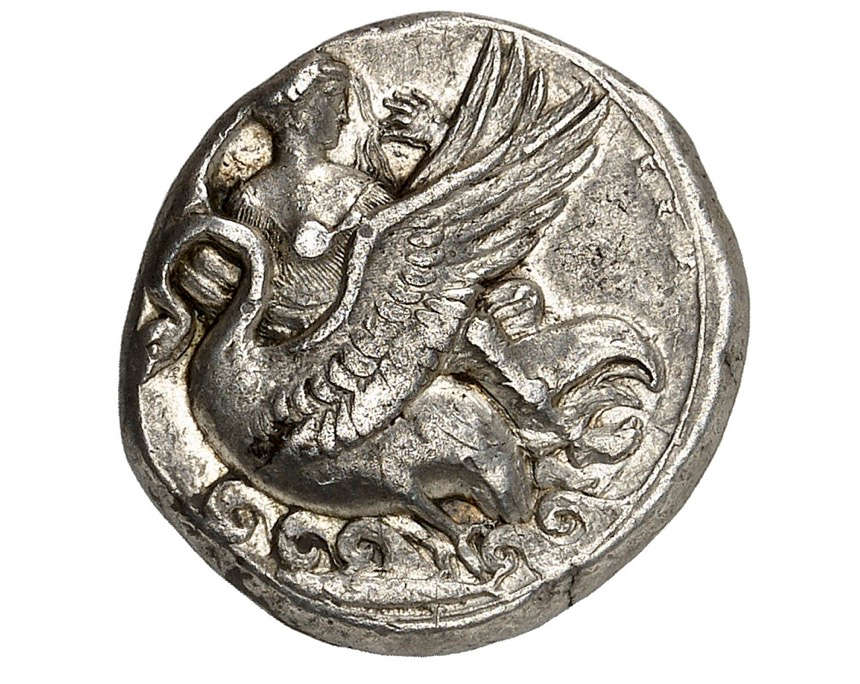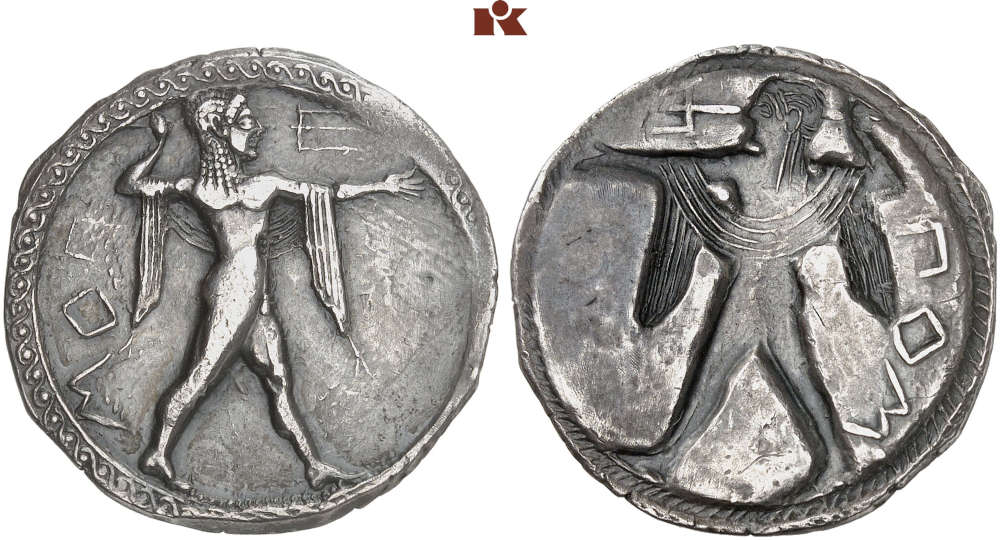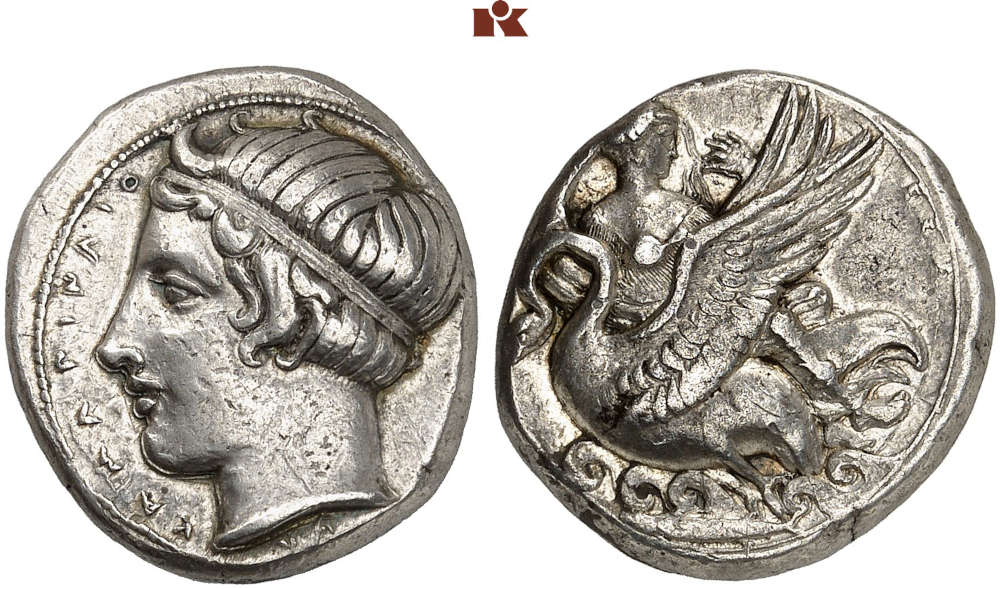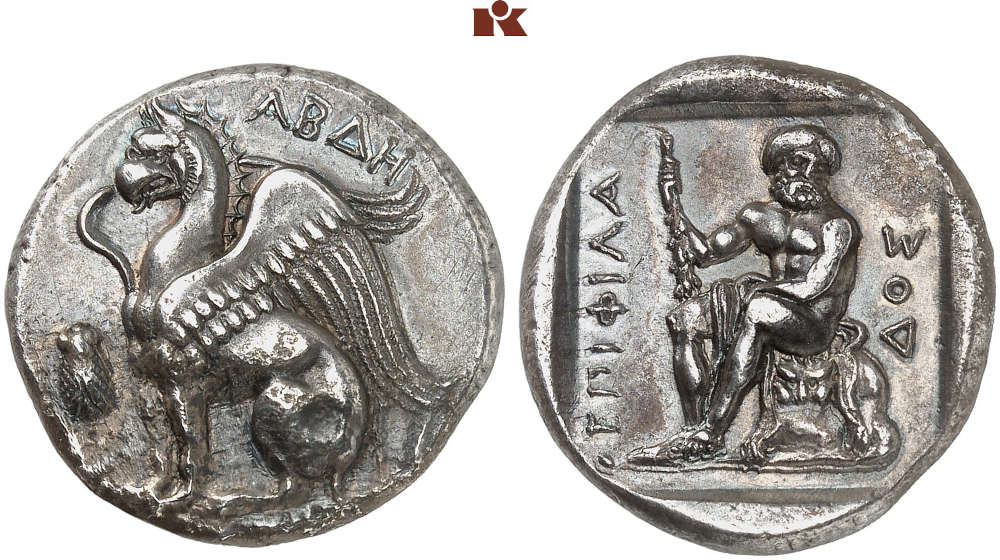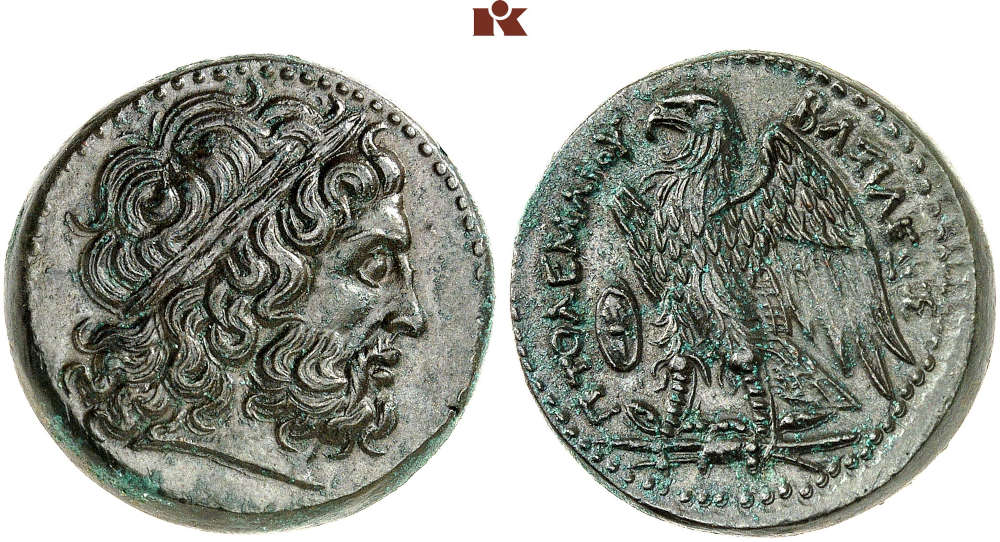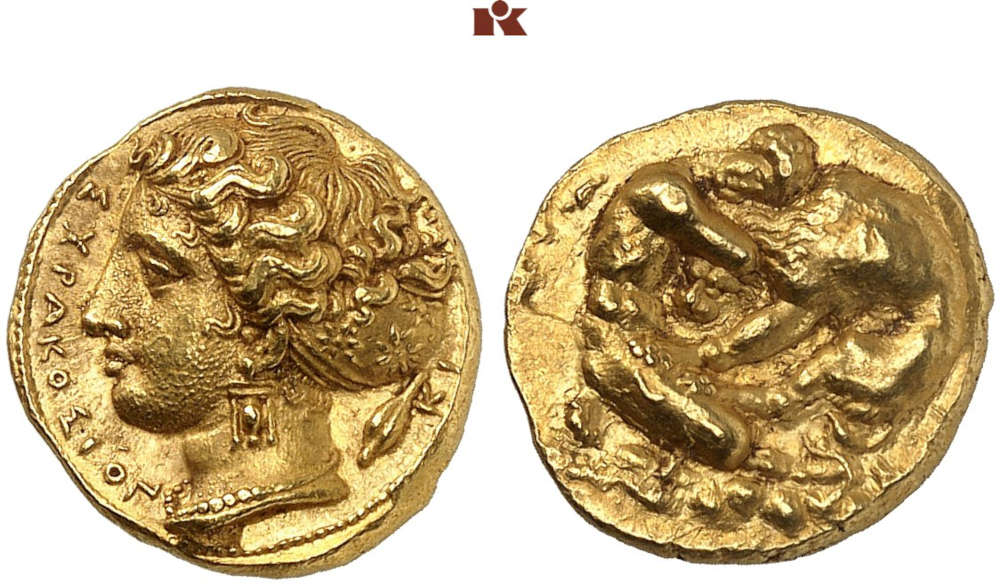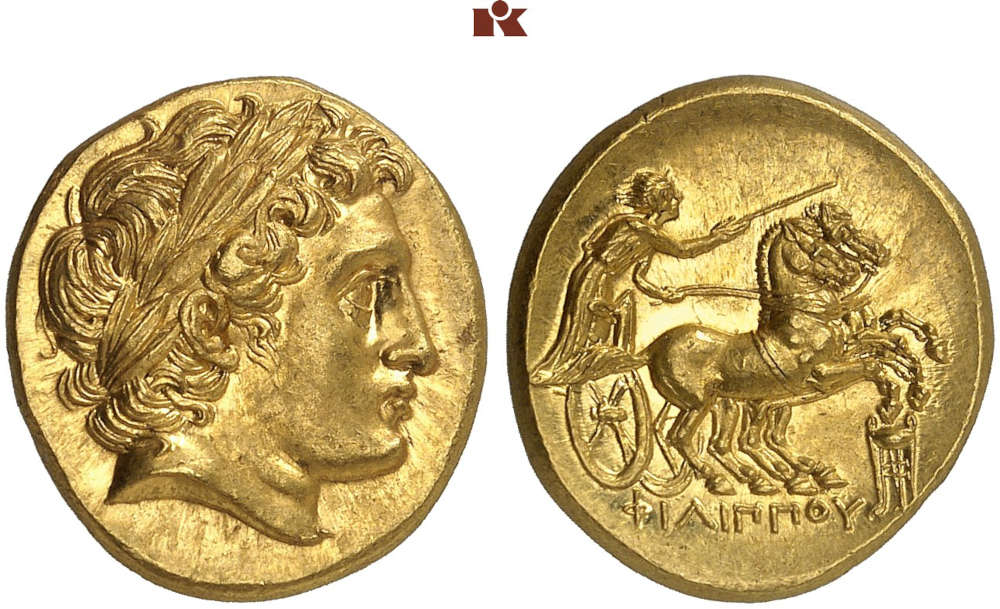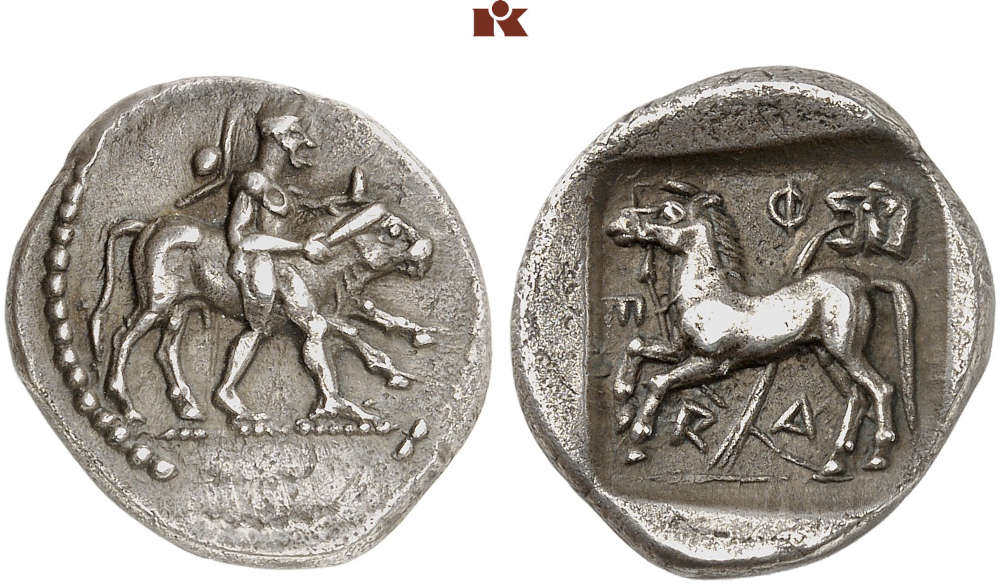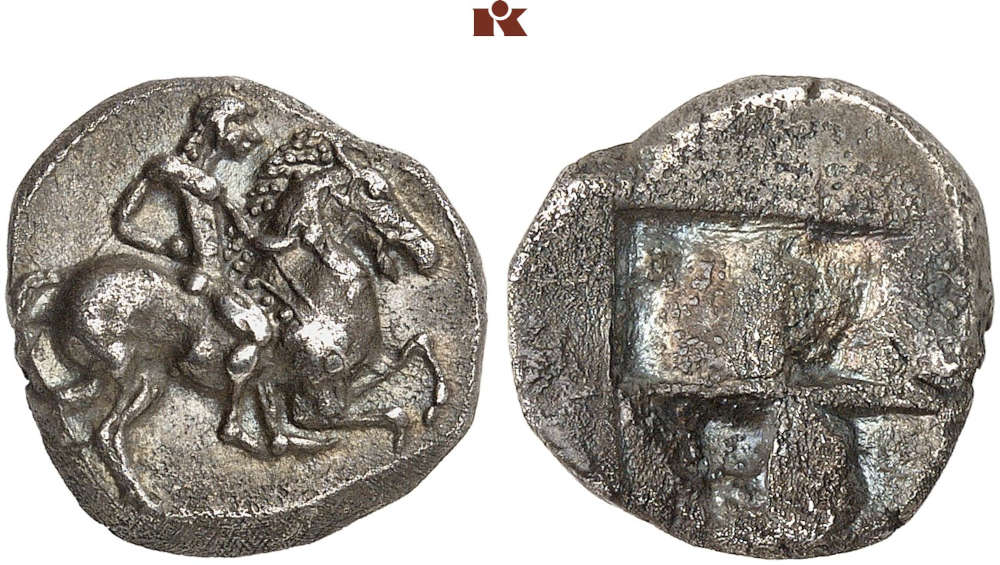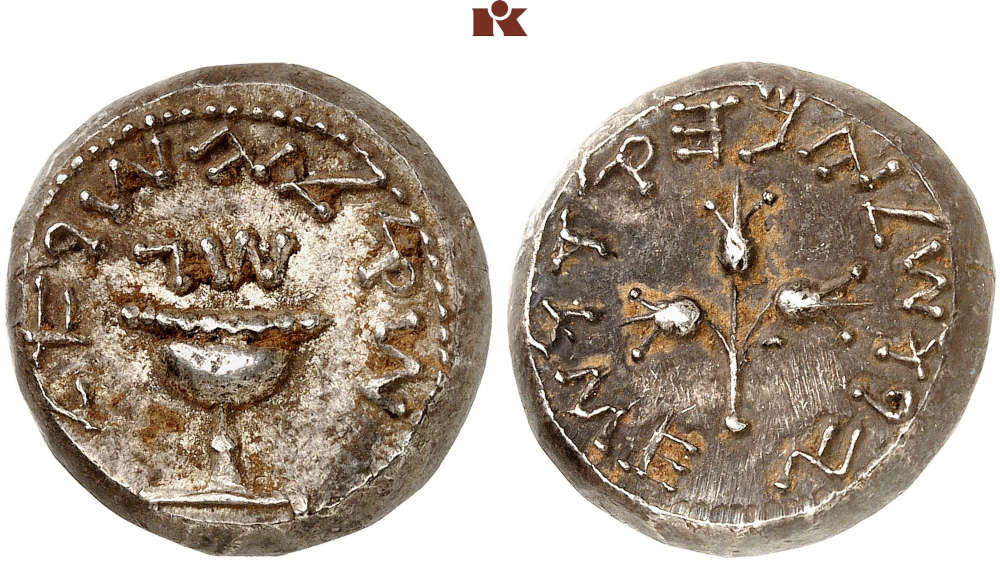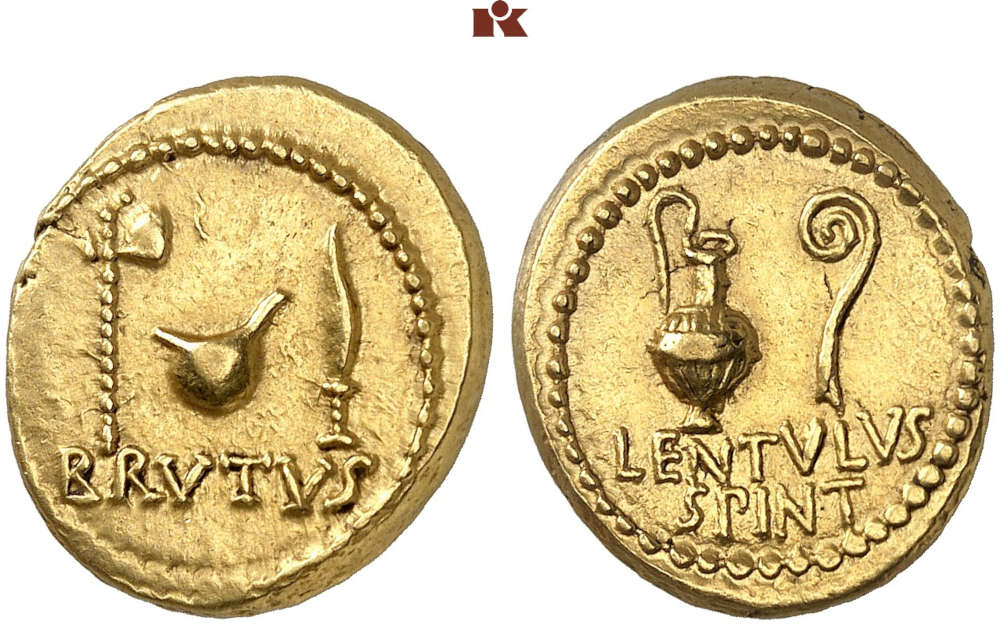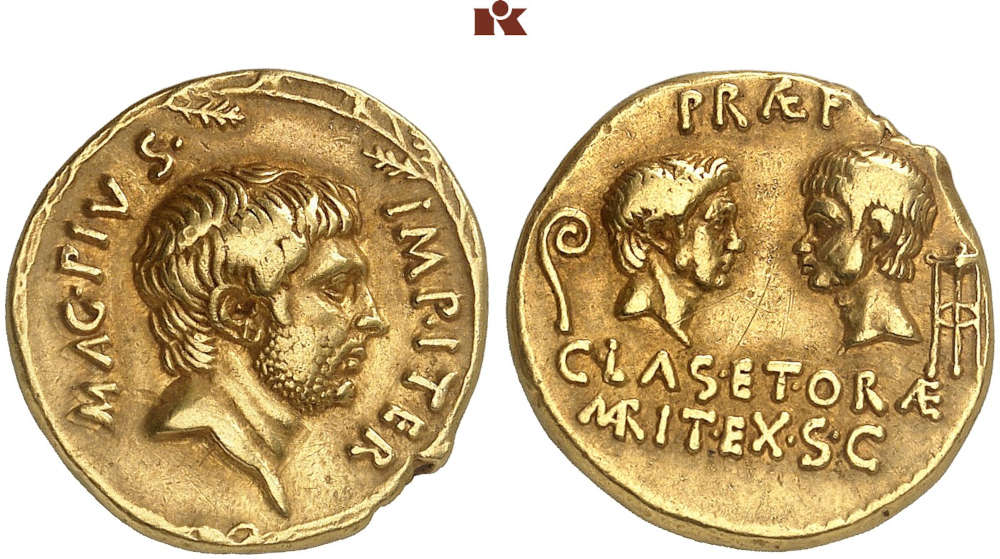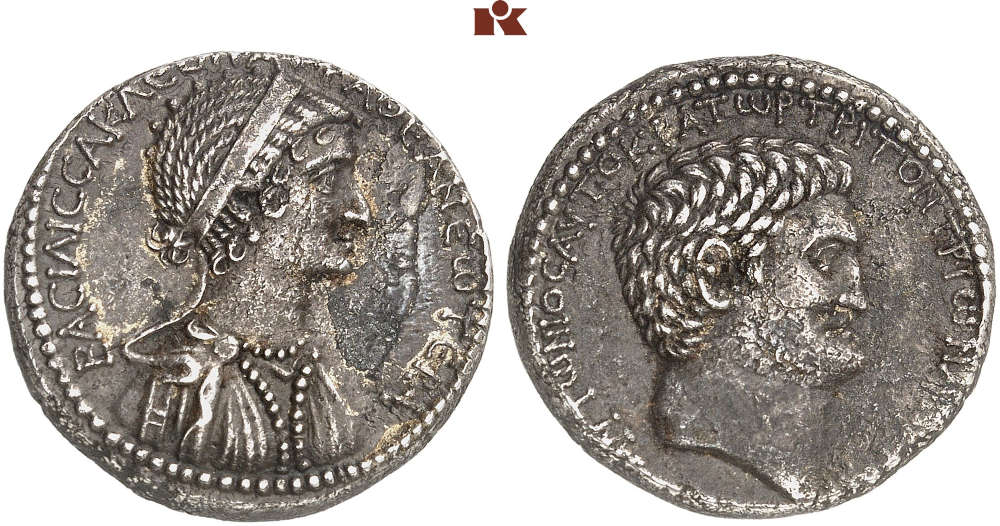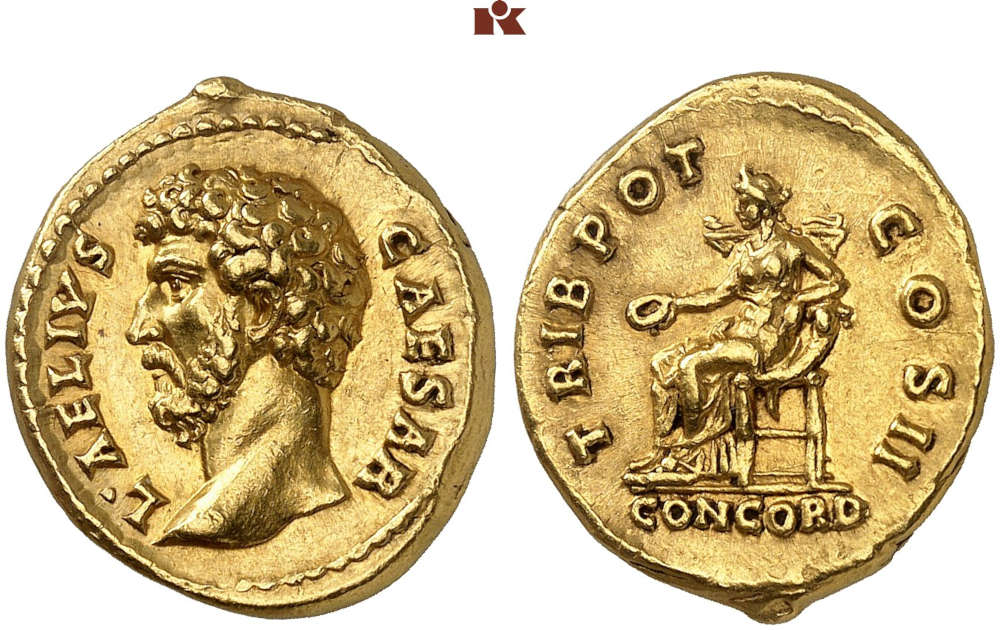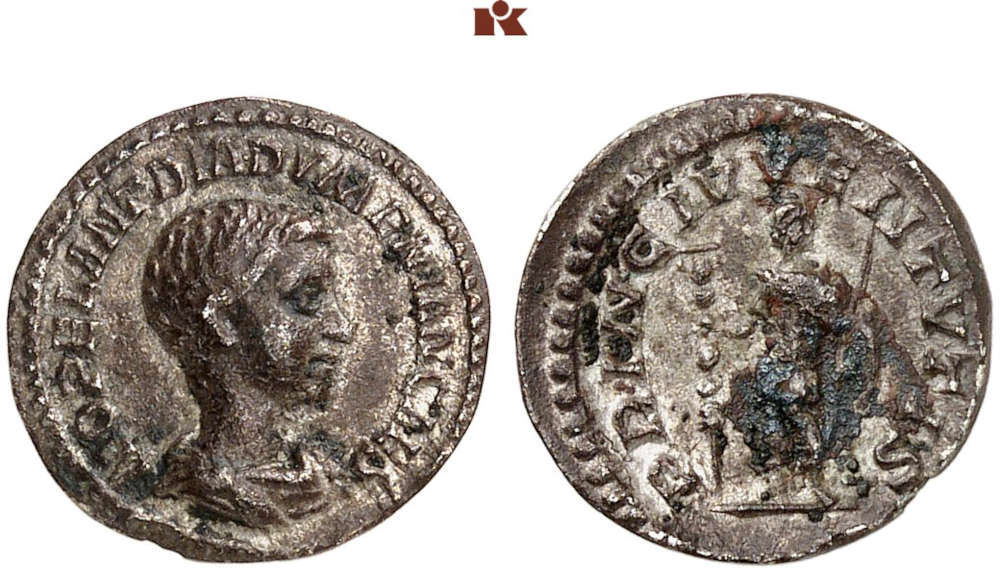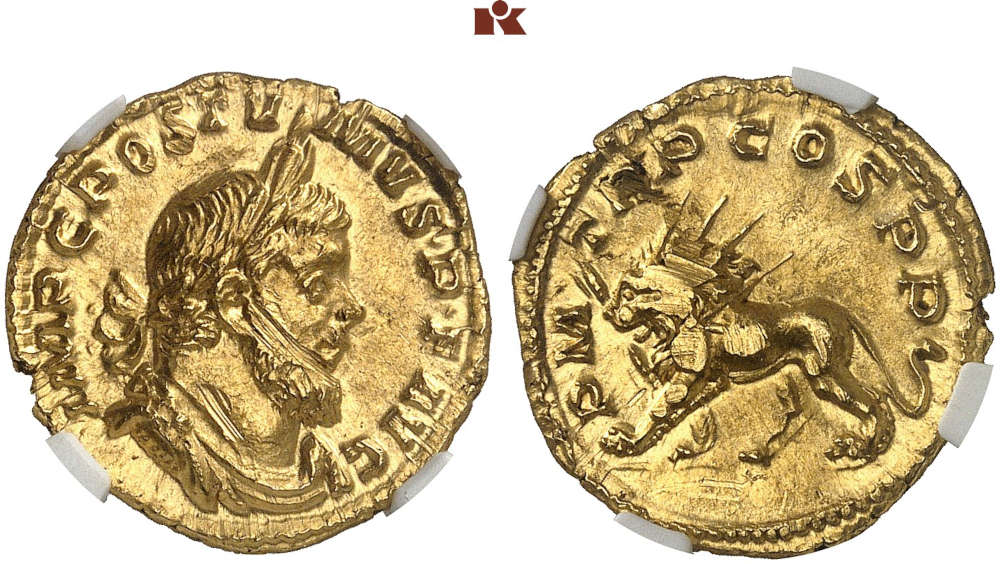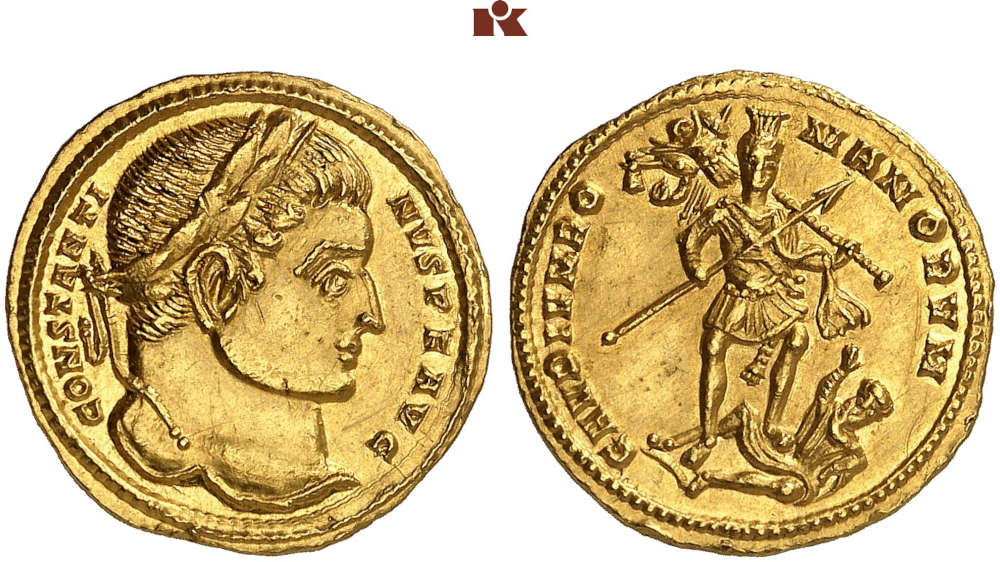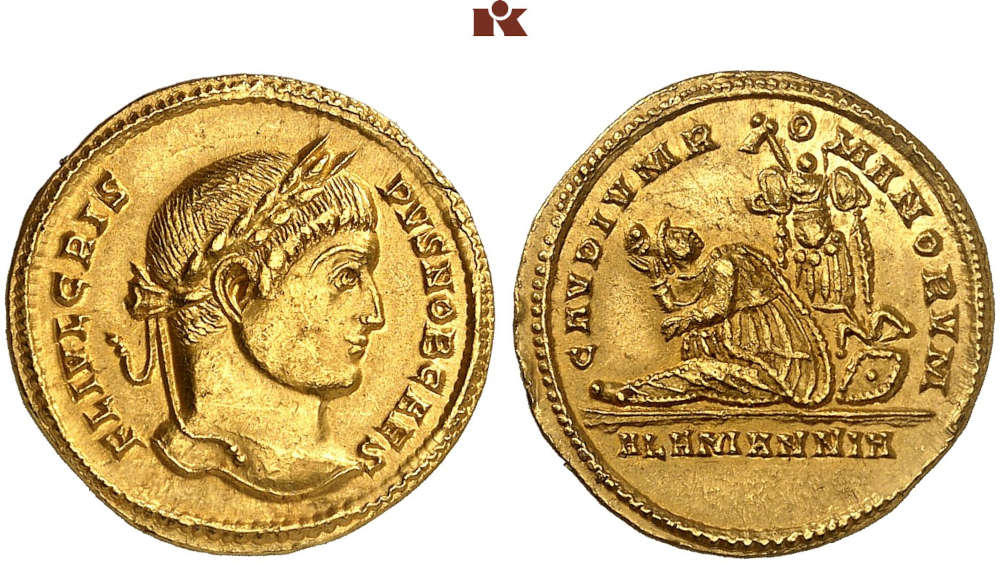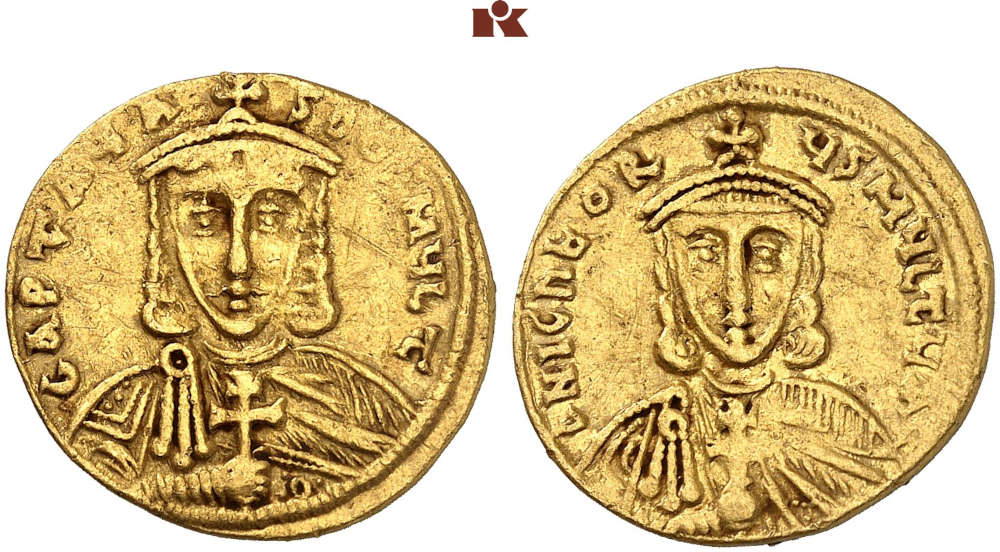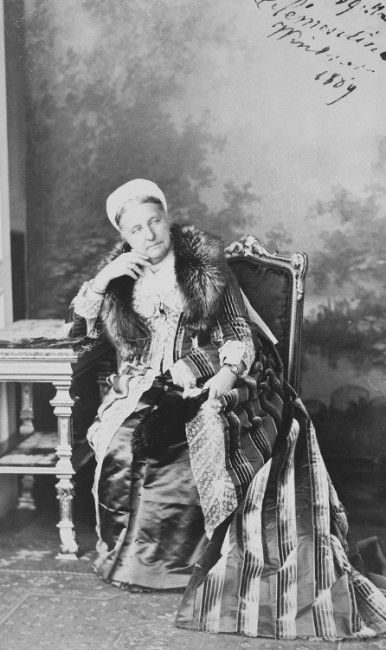Ancient Greek Coins from the Druckrey Collection at Künker
Künker
Auction 416
Coins
29-30 October 2024
D-Osnabrück
On 29 and 30 October 2024, the Künker auction house will hold auction 416. It contains 1038 lots with select Greek, Celtic, Roman and Byzantine coins as well as issues from the Migration Period and the Islamic world. We present a few highlights.
The Dr. Eike Druckrey Collection
“The Aesthetics and the World of Thought of the Early Greeks” – this is the title of and the idea behind Dr. Eike Druckrey’s collection of 305 exquisite Greek coins. He was not interested in accumulating as large a collection as possible, but rather in selecting the most beautiful works of art from the Greek Archaic and Classical periods that related to Hellenic ideas and concepts. This collection will open auction 416 on 29 October. Connoisseurs will be delighted to see all their favorites: Poseidonia, Kaulonia, Kamarina, Naxos, Syracuse, Abdera, Athens, Corinth… In short – anything that true lovers of Greek coinage dream of can be found in this collection. The beauty of these issues speaks for themselves. And they are a testament to Dr. Eike Druckrey’s keen eye for detail in selecting these pieces.
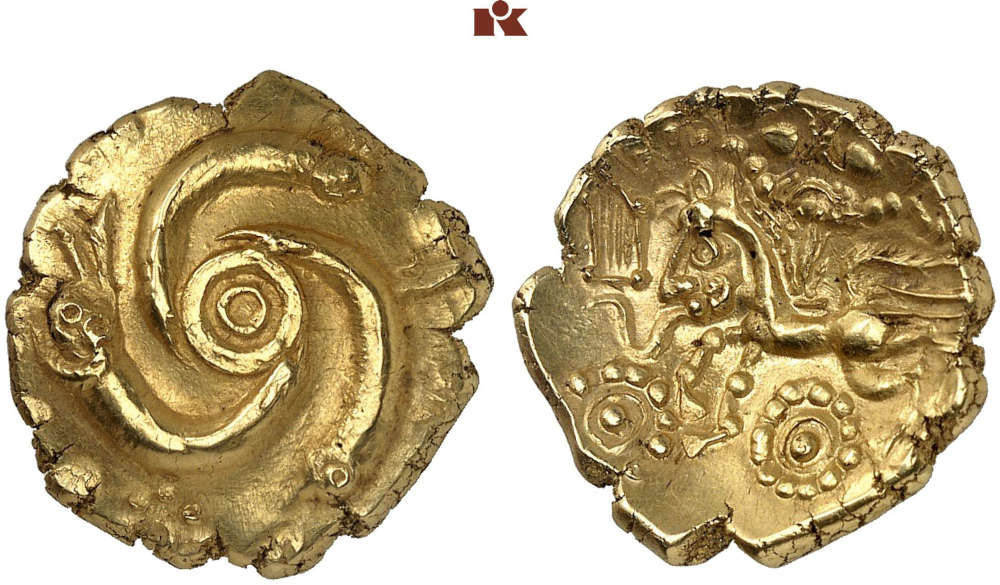
No. 1503: Celts. Eburones. Stater, middle of the 1th century BC. Extremely rare. Possibly the finest specimen of this type. Extremely fine. Estimate: 12,500 euros.
A Celtic Rarity of the Highest Historical Importance
After the Druckrey Collection, ancient rarities from various possessions will be presented. You can look forward to a beautiful series of Celtic gold coins, including a hemistater of the Caletes, who gave their name to Pays de Caux in Normandy, and an impressive gold stater of the Eburones of the highest historical importance. After all, the motif of this coin is associated with an episode of the Gallic Wars. Modern historians believe this depiction to be a means of propaganda for a Celtic uprising against the Roman troops. In fact, the Eburones resisted Roman conquest. Led by their king Ambiorix, they attacked a Roman winter camp in mid-November 54 BC. The 15 cohorts stationed there left in a hurry and were completely annihilated. Around 10,000 legionaries are said to have died, equating to about a fifth of the troops stationed in Gaul. Caesar took his revenge in 53 and 51 BC. He massacred all the Eburones he could find, burned their farms and drove off their cattle. There is archaeological evidence of this. After Caesar’s punitive campaign, the Eburones no longer existed.
Greek Coins from Various Possessions
Connoisseurs will also find numerous rarities in the section of Greek coins from various possessions, including an extremely rare 100-litrae piece from Syracuse, signed by Kimon, with a provenance dating back to 1917. Of exceptional beauty is a posthumous gold stater of the Philip II type, whose Apollo head reminds of the portrait of Alexander the Great. A wonderful drachm of Pherae is from the BCD Collection. Thanks to its immaculate condition, the elaborate depiction really comes into its own. And the same holds true regarding an archaic didrachm from Erythrae.
Aurei of Brutus and Pompeius
Künker is pleased to be able to offer a Brutus aureus, which was purchased from Spink & Son in London on 12 September 1969. The coin dates from 42 BC and is one of the issues used to finance the military campaign of Caesar’s assassins. The gold came from contributions of communities in Asia Minor. This aureus was probably struck before the meeting of Brutus and Cassius in Smyrna in early 42 BC, when they discussed how to proceed. The very attractive specimen of about extremely fine quality is estimated at 100,000 euros.
75,000 euros is the estimate of an aureus struck shortly afterwards, showing the portrait of Sextus Pompeius on the obverse, and the heads of his father and brother on the reverse. The coin was minted in 37/6 BC to finance the construction of the fleet.
Roman and Byzantine Rarities
Of course, these two aurei are not the only Roman rarities in this auction sale. Künker’s auction 416 features everything a collector’s heart desires: rare aurei, fine bronze coins, denarii with excellent portraits, and some interesting provincial issues – there is truly something for everyone.




